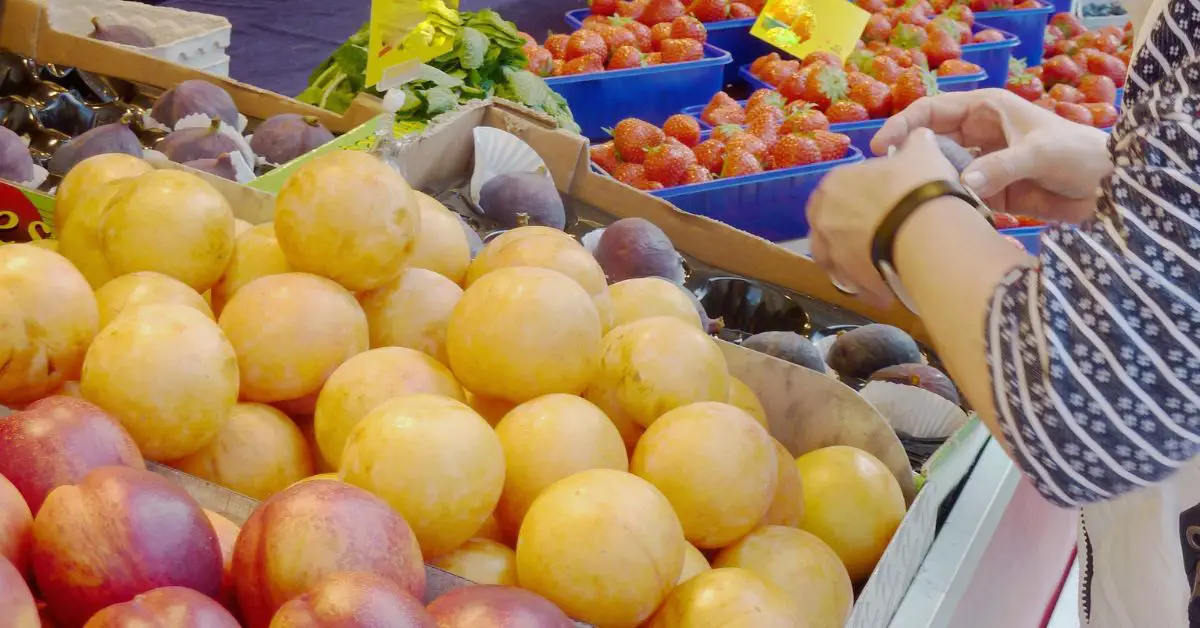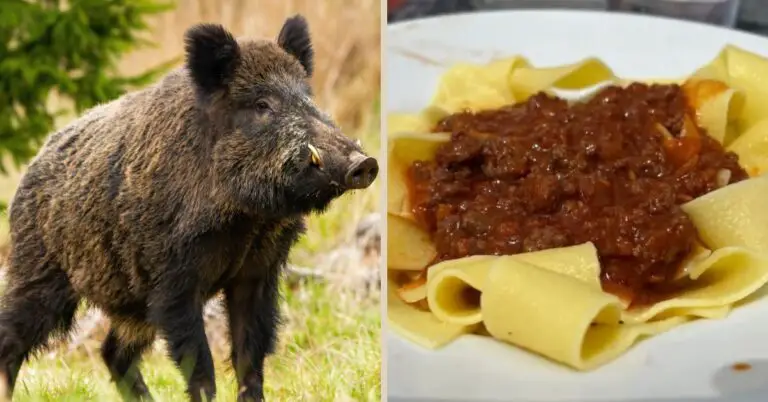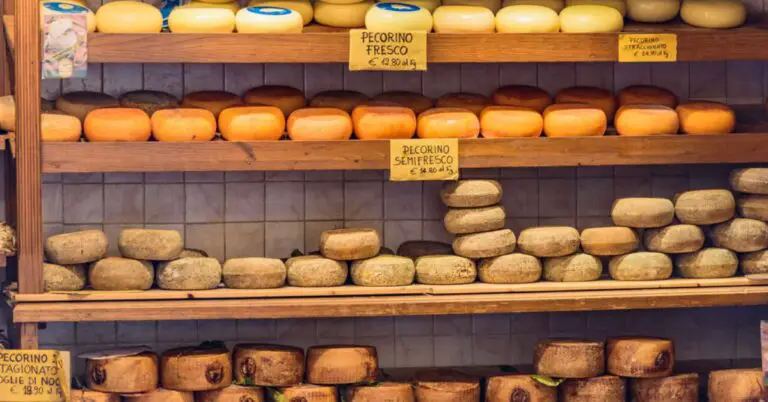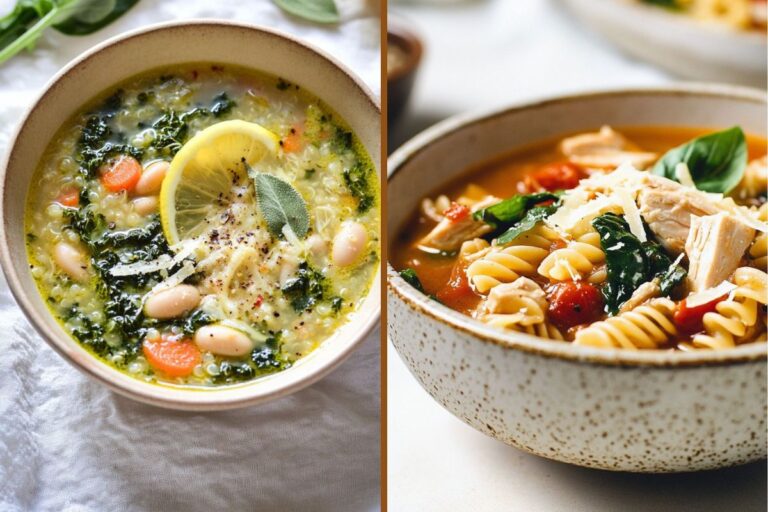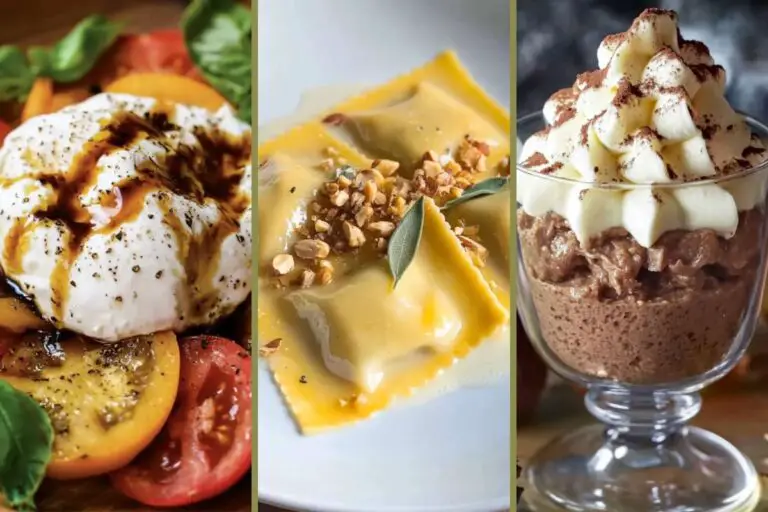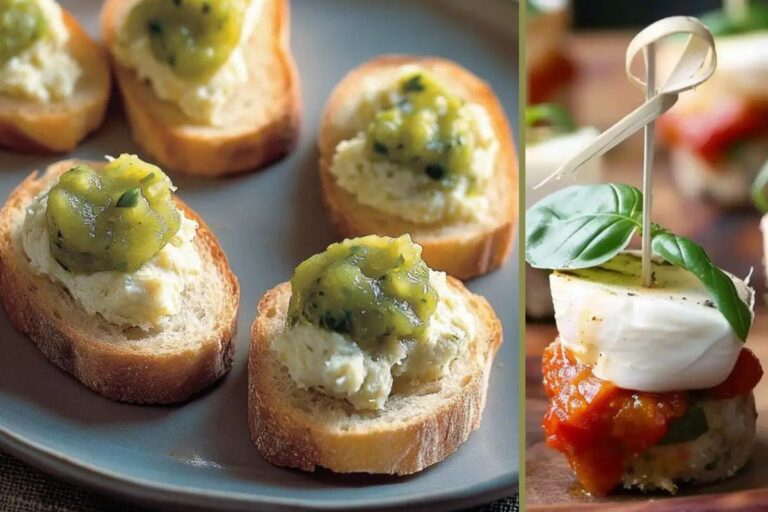Here I will list the seasonal fruits and vegetables that you can find here in Italy and the relative month of reference.
We are so lucky in Italy: the mild weather and the succession of cold and hot seasons, allows us to grow a large quantity of fruits and vegetables which, if consumed at the right time, are of top taste, basically we can eat them in a few days after their cultivation and harvesting. No greenhouses and no frozen products, all according to the right eason.
However, this huge variety and alternation of fruit and vegetables that we can find here can be a source of great confusion, even Italians find it hard to remember what is in season during the year.
That is why I created this guide on what to buy month by month in Italy, if you want to eat truly seasonal food.
When visiting Italy, you will notice that greengrocers and supermarkets offer fruits and vegetables that are not always in season. These products may be grown in greenhouses using chemicals and artificial heating or imported from foreign countries. To help you choose the best food based on the time of year, this guide provides information on seasonal produce in Italy.
But now let’s get to the concrete, here is the calendar of Italian seasonal fruits and vegetables for each month:
January: Seasonal fruits and vegetables in Italy
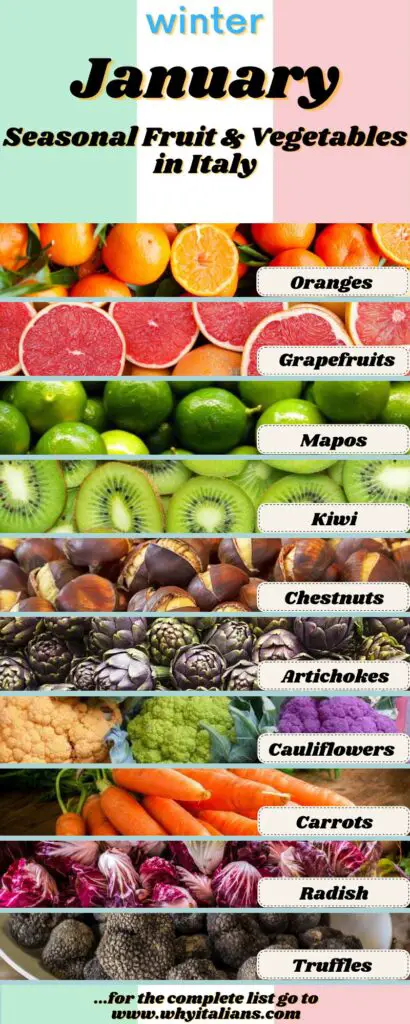
Here there are the seasonal fruits in January in Italy:
- Oranges (arance),
- clementine (clementine),
- tangerines(mandarini),
- clementine (mandarancio)
- ugli fruit (mapo)
- grapefruits (pompelmi),
- kiwi (kiwi)
- chestnuts (castagne)
Here there are the seasonal vegetables in January in Italy:
- leeks (porri),
- Roman artichokes (carciofi romaneschi),
- beetroots (barbabietole),
- beets (bietole),
- cauliflower (cavolfiore)
- cabbages (cavoli),
- chicory (cicoria),
- spinach (spinaci)
- fennels (finocchi)
- radish (radicchio),
- radishes (ravanelli),
- carrots (carote),
- celery (sedano),
- pumpkin (zucca),
- winter lettuce (lattuga invernale),
- turnips (rape),
- topinambur (topinambur),
- potatoes (patate),
- garlic (aglio),
- onion (cipolla),
- shallot (scalogno),
- chives (erba cipollina),
- mushrooms (funghi),
- truffles (tartufi).
What seasonal fruit and vegetables can we eat in January in Italy?
Even in Italy, January is a fairly cold month, and like every cold month it brings with it a good dose of citrus fruits, which in this period are abundant and fresh from the harvest, from the sweet clementines of Calabria to the timeless oranges of Sicily.
Furthermore, in January you can eat different varieties of vegetables and roots: from cruciferous vegetables such as cabbage and broccoli, to ribbed vegetables such as cabbage, celery, chicory, and those with broad leaves such as radicchio, endive, escarole (Check out my recipe for the original Neapolitan escarole pizza here), winter lettuce. The list is quite long, and also includes roots and tubers such as turnips, topinambur and potatoes.
All products that lend themselves to quick, simple and cheap recipes, exactly the way we Italians like them. Then, in order to taste them, you can use the bulbs like garlic, onion and shallots which are not lacking in January.
February: Seasonal fruits and vegetables in Italy
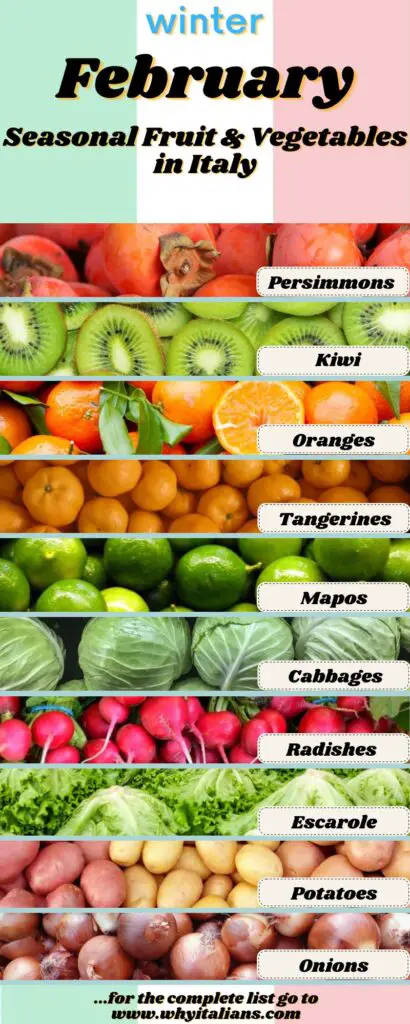
Here there are the seasonal fruits in February in Italy:
- Oranges (arance),
- clementine (clementine),
- tangerines (mandarini),
- clementine (mandarancio),
- ugli fruit (mapo),
- kiwi (kiwi),
- persimmons (cachi)
Here there are the seasonal vegetables in February in Italy:
- cabbages (cavoli),
- broccoli (broccoli),
- white cabbage (cavolo cappuccio),
- Swiss Chard (coste),
- chicory (cicoria),
- thistle (cardo),
- radishes (ravanelli),
- escarole (scarola),
- winter lettuce (lattuga invernale),
- spinach (spinaci),
- turnips (rape),
- topinambur (topinambur),
- potatoes (patate),
- pumpkin (zucca),
- garlic (aglio),
- onion (cipolla),
- shallot (scalogno),
- chives (erba cipollina),
- dandelion (tarassaco).
What seasonal fruit and vegetables can we eat in February in Italy?
In February the weather is still quite cold, which means that even here in Italy we have to safeguard our immune defenses, better protect ourselves and continue to buy tangerines with a more sour taste, and crossbreeding of citrus fruits such as tangerines and mapo, and other seasonal fruits such as kiwis and persimmons, to be enjoyed raw or as a very sweet and unusual jam.
Among the vegetables of the month of February we find chard, cabbage of all varieties. But it’s still time for chicory, onions, endives and winter lettuce. Artichokes, celery and carrots also peep out.
At the end of February it is also possible to collect or find in some Italian market stalls the dandelion leaves, excellent to be eaten raw in salads.
March: Seasonal fruits and vegetables in Italy
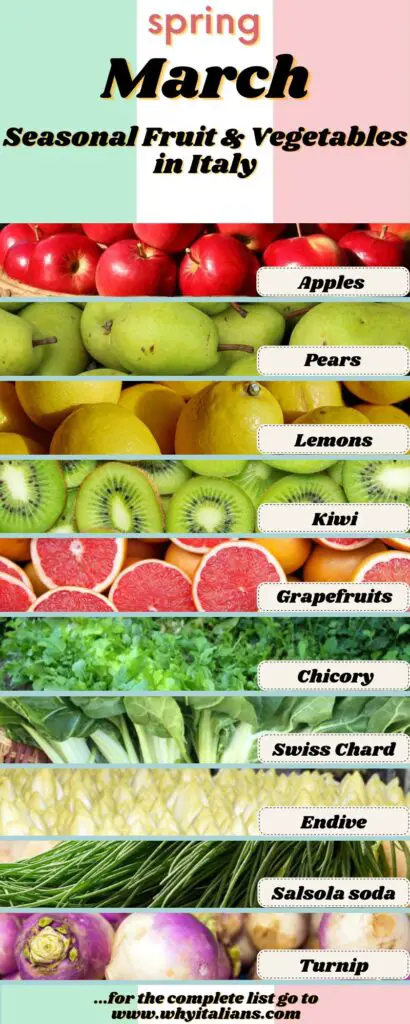
Here there are the seasonal fruits in March in Italy:
- apples (mele),
- pears (pere),
- kiwi (kiwi),
- persimmons (cachi),
- oranges (arance),
- tangerines (mandarini),
- clementines (clementine),
- tangerines (mandaranci),
- ugly fruit (mapo),
- grapefruits (pompelmi),
- lemons (limoni).
Here there are the seasonal vegetables in March in Italy:
- broccoli (broccoli),
- cauliflower (cavolfiori),
- cabbage (cappuccio),
- white cabbage (cavolo cappuccio),
- kale (verza),
- Brussels sprouts (cavolini di Bruxelles),
- Swiss Chard (coste),
- chicory (cicoria),
- thistle (cardo),
- radish (radicchio),
- endive (indivia),
- escarole (scarola),
- winter lettuce (lattuga invernale),
- salsola soda (agretti),
- artichokes (carciofi),
- celery (sedano),
- carrots (carote),
- spinach (spinaci),
- turnip (rapa),
- topinambur (topinambur),
- potatoes (patate),
- pumpkin (zucca),
- garlic (aglio),
- onion (cipolla),
- shallot (scalogno)
What seasonal fruit and vegetables can we eat in March in Italy?
Spring is the awakening of Nature par excellence: the buds peep out on the branches and fruit and vegetables stalls are filled with novelties with which to prepare excellent courses to greet the summer.
In Italy it is time for apples in March, a fruit rich in vitamins and truly versatile with which you can make many recipes. In this period, pears can be found, as well as citrus fruits and kiwis. There are still many winter vegetables in our fields, starting with broccoli.
April: Seasonal fruits and vegetables in Italy
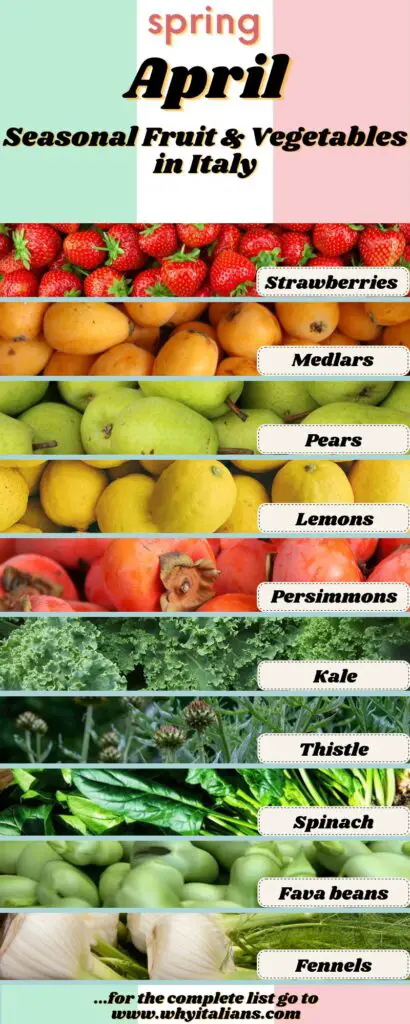
Here there are the seasonal fruits in April in Italy:
- strawberries (fragole),
- medlars (nespole),
- pears (pere),
- kiwi (kiwi),
- persimmons (cachi),
- oranges (arance),
- tangerines (mandarini),
- clementines (clementine),
- tangerines (mandaranci),
- ugly fruit (mapo),
- grapefruits (pompelmi),
- lemons (limoni).
Here there are the seasonal vegetables in April in Italy:
- broccoli (broccoli),
- cauliflower (cavolfiori),
- white cabbage (cavolo cappuccio),
- cabbage (cappuccio),
- Brussels sprouts (cavolini di Bruxelles),
- Swiss Chard (coste),
- kale (verza),
- chicory (cicoria),
- thistle (cardo),
- radish (radicchio),
- endive (indivia),
- escarole (scarola),
- celery (sedano),
- carrots (carote),
- spinach (spinaci),
- turnip (rapa),
- topinambur (topinambur),
- new potatoes (patate novelle),
- garlic (aglio),
- onion (cipolla),
- shallot (scalogno),
- beets (bietole),
- asparagus (asparagi),
- valerian (valeriana),
- watercress (crescione),
- artichokes (carciofi),
- peas (piselli),
- leeks (porri),
- herbs (erbette)
- fava beans (fave),
- fennels (finocchi),
- rocket (rucola),
- nettle (ortica),
- thyme (timo),
- marjoram (maggiorana).
What seasonal fruit and vegetables can we eat in April in Italy?
Towards the end of April I will also report the first strawberries, choose them organic, because this delicious fruit is delicate and many producers are tempted to protect them with remedies that have little natural.
In this period the medlars and chard (also called ribs) also flowered, which must be bought fresh, but can also be kept in the fridge for 4-5 days.
On the shelves, arranged in inviting bunches, the asparagus has also arrived, to understand if they are fresh, you need to fold them and hear a clear noise, the same technique also for the chard, valerian and watercress also arrive.
There are still vegetables for the cold months, but new spring vegetables are added: artichokes, carrots, peas, leeks, watercress, herbs, broad beans, fennel, leeks, radishes and rocket.
In the woods and meadows you can collect nettles, to make tasty soups, and aromatic herbs, such as thyme and marjoram.
May: Seasonal fruits and vegetables in Italy
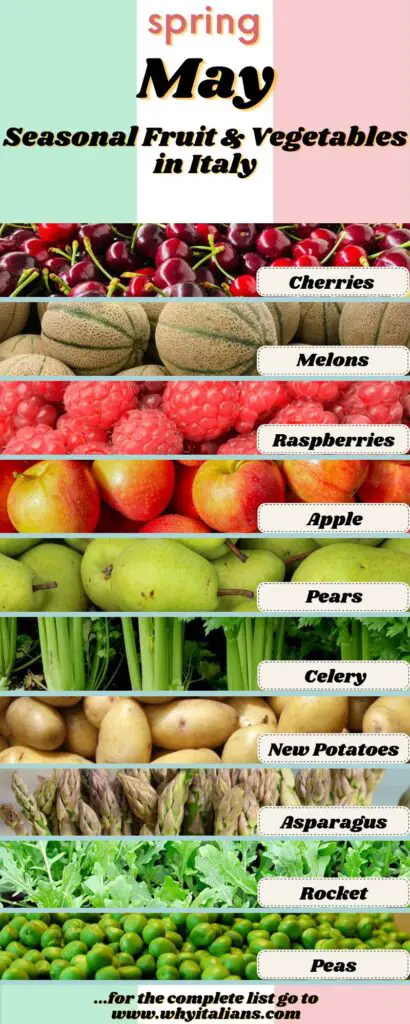
Here there are the seasonal fruits in May in Italy:
- strawberries (fragole),
- medlars (nespole),
- cherries (ciliegie),
- kiwi (kiwi),
- raspberries (lamponi),
- apples (mele),
- melons (meloni),
- grapefruits (pompelmi),
- pears (pere)
Here there are the seasonal vegetables in May in Italy:
- chicory (cicoria),
- thistle (cardo),
- radish (radicchio),
- celery (sedano),
- carrots (carote),
- spinach (spinaci),
- new potatoes (patate novelle),
- asparagus (asparagi),
- valerian (valeriana),
- watercress (crescione),
- beets (bietole),
- green beans (fagiolini),
- fava beans (fave),
- fennels (finocchi),
- artichokes (carciofi),
- peas (piselli),
- leeks (porri),
- herbs (erbette),
- radishes (ravanelli),
- rocket (rucola),
- nettle (ortica),
- thyme (timo),
- marjoram (maggiorana).
- borage (borragine)
What seasonal fruit and vegetables can we eat in May in Italy?
The last month of spring continues in Italy with an explosion of colors, many new varieties of fruit and vegetables arrive. Strawberries peep out, good to eat both fresh and cooked in cakes or jams, you can also find medlars.
In May you can eat many new vegetables such as peas, asparagus, chard, chicory, green beans, broad beans, fennel, new potatoes and rocket. Among the herbs, the borage ripens.
June: Seasonal fruits and vegetables in Italy
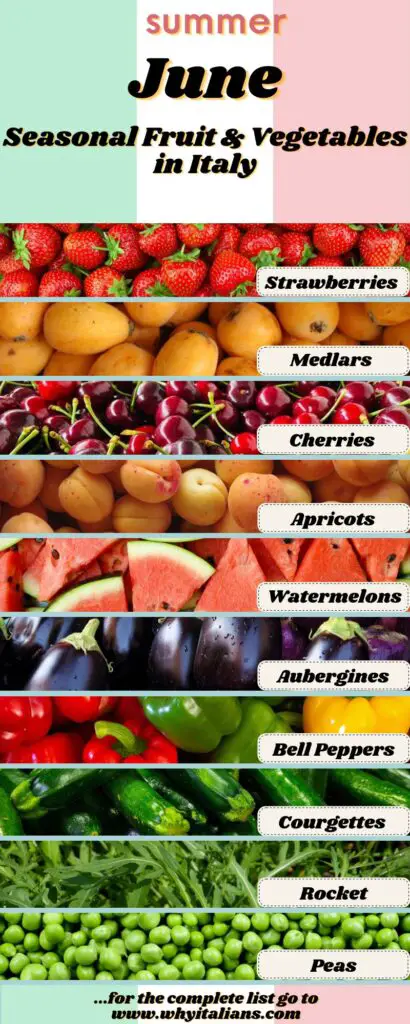
Here there are the seasonal fruits in June in Italy:
- strawberries (fragole),
- medlars (nespole),
- cherries (ciliegie),
- apricots (albicocche),
- watermelons (angurie),
- melon (melone).
Here there are the seasonal vegetables in June in Italy:
- celery (sedano),
- carrots (carote),
- spinach (spinaci),
- new potatoes (patate novelle),
- asparagus (asparagi),
- aubergines (melanzane),
- bell peppers (peperoni),
- courgettes (zucchine),
- valerian (valeriana),
- watercress (crescione),
- green beans (fagiolini),
- fava beans (fave),
- fennels (finocchi),
- peas (piselli),
- leeks (porri),
- radishes (ravanelli),
- rocket (rucola),
- nettle (ortica),
- thyme (timo),
- marjoram (maggiorana).
- borage (borragine)
What seasonal fruit and vegetables can we eat in June in Italy?
June also arrives with its load of fruit: cherries, strawberries, apricots, the first watermelons and the juicy and sweet melon. Shopping in this period is a pleasure because there are a lot of choices. Among the vegetables, we can choose between peppers, asparagus and aubergines.
July: Seasonal fruits and vegetables in Italy
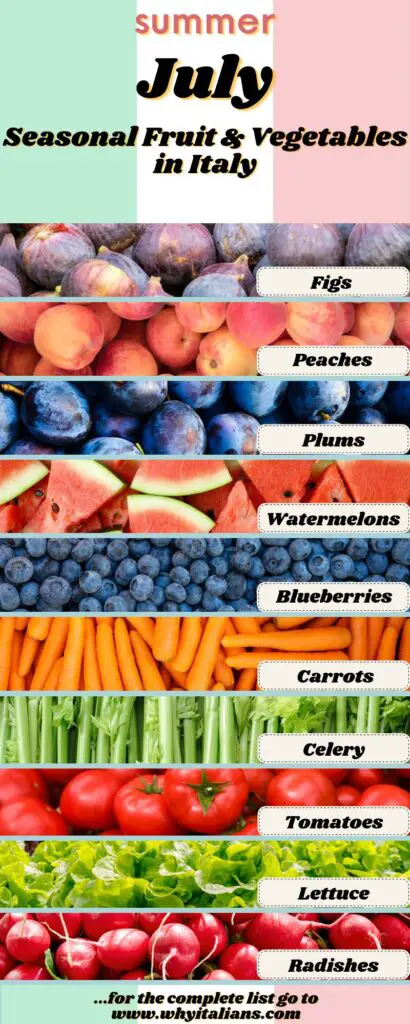
Here there are the seasonal fruits in July in Italy:
- plums (susine),
- strawberries (fragole),
- medlars (nespole),
- peaches (pesche),
- cherries (ciliegie),
- raspberries (lamponi),
- currants (ribes),
- blueberries (mirtilli),
- sour cherries (amarene),
- apricots (albicocche),
- figs (fichi),
- watermelons (angurie),
- melon (melone).
Here there are the seasonal vegetables in July in Italy:
- garlic (aglio),
- rocket (rucola),
- rhubarb (rabarbaro),
- cucumbers (cetrioli),
- aubergines (melanzane),
- courgettes (zucchine),
- peppers (peperoni),
- new potatoes (patate novelle),
- beet (barbabietola),
- carrots (carote),
- celery (sedano),
- peas (piselli),
- lettuce (lattuga),
- tomatoes (pomodori),
- green beans (fagiolini),
- radishes (ravanelli).
What seasonal fruit and vegetables can we eat in July in Italy?
July is the golden moment for fruit in Italy, the apricots reach their optimal degree of ripeness and the plums also arrive.
Finally the cherries arrive, the sweetest are of the Vignola variety, dark red in color. Figs and watermelon take the place of the last strawberries. The moment is also excellent for picking melons and peaches. But the offer of vegetables is also plentiful: aubergines, tomatoes and peppers, and even cucumbers appear.
August: Seasonal fruits and vegetables in Italy
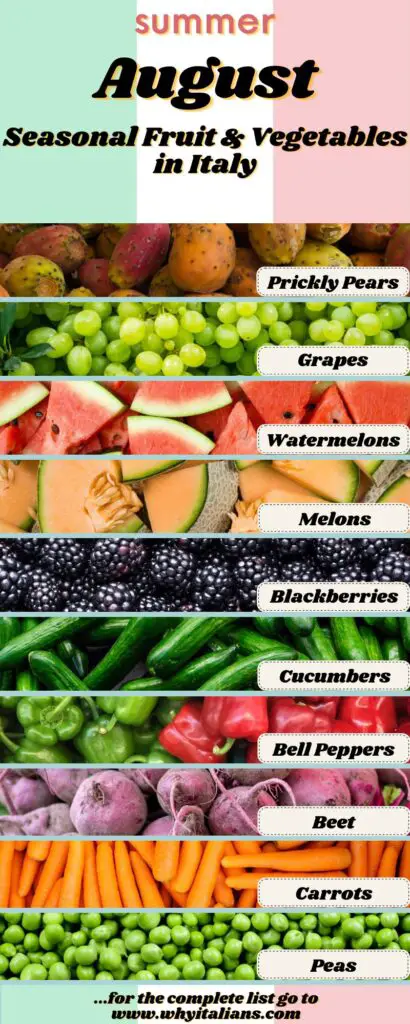
Here there are the seasonal fruits in August in Italy:
- apricots (albicocche),
- peaches (pesche),
- plums (susine),
- watermelons (angurie),
- melon (melone),
- cherries (ciliegie),
- raspberries (lamponi),
- blueberries (mirtilli),
- blackberries (more),
- strawberries (fragole),
- currants (ribes),
- figs (fichi)
- prickly pears (fichi d’India),
- medlars (nespole),
- grapes (uva).
Here there are the seasonal vegetables in August in Italy:
- garlic (aglio),
- rocket (rucola),
- rhubarb (rabarbaro),
- cucumbers (cetrioli),
- aubergines (melanzane),
- courgettes (zucchine),
- peppers (peperoni),
- new potatoes (patate novelle),
- beet (barbabietola),
- carrots (carote),
- celery (sedano),
- peas (piselli),
- lettuce (lattuga),
- tomatoes (pomodori),
- green beans (fagiolini),
- radishes (ravanelli).
What seasonal fruit and vegetables can we eat in August in Italy?
In Italy, just go to the fruit or vegetable department of a supermarket, greengrocer or local market to find out how many delicacies the hottest month of the year offers us. The lion’s share goes to fruit, which even in August is varied and so tasty, especially useful for refreshment and hydration. Then make way for watermelon, cherries, apricots, and berries. There are also blackberries and figs. Many people have lunch with fruit directly on the beach.
Several varieties of summer vegetables are also ripe in this period, including aubergines, peppers, tomatoes, cucumbers.
September: Seasonal fruits and vegetables in Italy
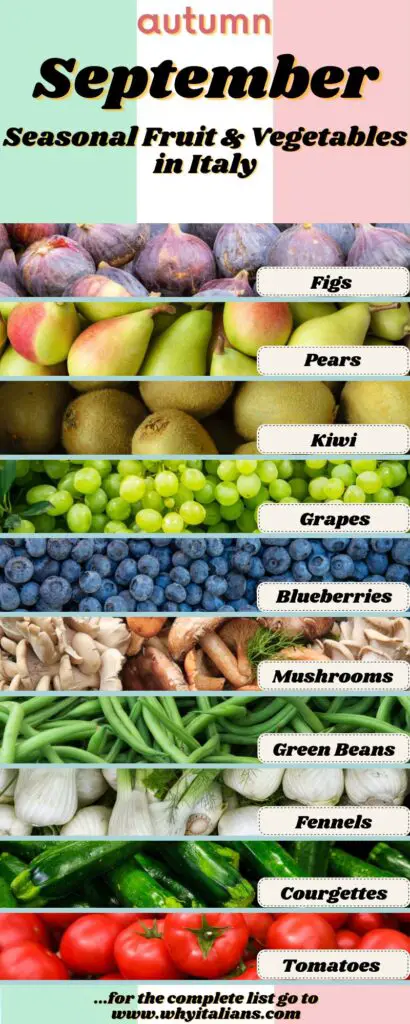
Here there are the seasonal fruits in September in Italy:
- grapes (uva),
- pears (pere),
- apples (mele),
- kiwi (kiwi),
- apricots (albicocche),
- watermelons (angurie),
- melon (melone),
- raspberries (lamponi),
- blueberries (mirtilli),
- blackberries (more),
- currants (ribes),
- figs (fichi)
- prickly pears (fichi d’India),
- medlars (nespole).
Here there are the seasonal vegetables in September in Italy:
- potatoes (patate),
- tomatoes for sauce (pomodori da sugo),
- courgettes (zucchine),
- aubergines (melanzane),
- peppers (peperoni),
- green beans (fagiolini),
- cauliflower (cavolfiore),
- fennels (finocchi),
- pumpkin (zucca),
- turnip greens (cime di rapa),
- spinach (spinaci),
- pore mushrooms (porcini),
- chanterelles (finferli),
- horns of plenty (trombette dei morti),
- truffles (tartufi).
What seasonal fruit and vegetables can we eat in September in Italy?
When September arrives in Italy everyone knows that it is the month of grapes, you can choose between the white and black table varieties. In September we can still eat summer fruits such as figs, melons and plums. For September vegetables, broccoli, cabbage and pumpkin are also back.
October: Seasonal fruits and vegetables in Italy
Here there are the seasonal fruits in October in Italy:
- apples (mele),
- kiwi (kiwi),
- persimmons (cachi),
- tangerines (mandarini),
- lemons (limoni),
- pomegranates (melograni),
- chestnuts (castagne).
Here there are the seasonal vegetables in October in Italy:
- radish (radicchio),
- cauliflower (cavolfiore),
- broccoli (broccoli),
- Roman broccoli (broccolo romanesco),
- cabbage (verza),
- Portuguese cabbage (cavolo portoghese),
- black cabbage (cavolo nero),
- white cabbage (cavolo cappuccio),
- turnip greens (cime di rapa),
- catalonia chicory (cicoria catalogna),
- pumpkin (zucca),
- olives (olive),
- mushrooms (funghi),
- truffles (tartufi),
- noci (nuts),
- fennels (finocchi),
- pore mushrooms (porcini),
- chanterelles (finferli),
- horns of plenty (trombette dei morti).
What seasonal fruit and vegetables can we eat in October in Italy?
October is the chestnuts’ month, for those who have the chance to go to the hills, it will be the perfect occasion to collect them directly and take beautiful walks in the fresh air.
With the first rains, October lends itself to mushroom picking, in Italy, we eat a lot of mushrooms. October fruit is also enriched by persimmons and pomegranates. Regarding the vegetables, say goodbye to cucumbers, zucchini, aubergines and peppers instead, say hello to cabbage and pumpkin.
November: Seasonal fruits and vegetables in Italy
Here there are the seasonal fruits in November in Italy:
- oranges (arance),
- tangerines (mandarini)
- clementines (clementine),
- lemons (limoni),
- grapes (uva),
- apples (mele),
- kiwi (kiwi),
- persimmons (cachi),
- chestnuts (castagne).
Here there are the seasonal vegetables in November in Italy:
- cabbages (cavoli),
- turnip greens (cime di rapa),
- broccoli (broccoli),
- Roman broccoli (broccolo romanesco),
- cauliflower (cavolfiore),
- prickly artichokes (carciofi spinosi),
- potatoes (patate),
- fennels (finocchi),
- mushrooms (funghi),
- truffles (tartufi),
- new wine (vino novello),
- oil (olio).
What seasonal fruit and vegetables can we eat in November in Italy?
November is vitamin C month: oranges, tangerines, clementines and kiwis arrive. Particularly, Sicilian blood oranges contain 40% more vitamin C than other citrus fruits. This month many types of vegetables arrive on our tables: first of all, cruciferous vegetables, then there are the first artichokes, the prickly ones and potatoes.
December: Seasonal fruits and vegetables in Italy
Here there are the seasonal fruits in December in Italy:
- grapes (uva),
- oranges (arance),
- tangerines (mandarini)
- clementines (clementine),
- lemons (limoni),
- kiwi (kiwi),
- persimmons (cachi),
- chestnuts (castagne).
Here there are the seasonal vegetables in December in Italy:
- carrots (carote),
- artichokes (carciofi),
- celery (sedano),
- chicory (cicoria),
- radish (radicchio),
- endive (indivia),
- turnip tops (cime di rapa),
- black cabbages (cavoli neri),
- cauliflower (cavolfiori),
- cabbages (verze),
- broccoli and Roman broccoli (broccoli e broccoli romaneschi),
- leeks (porri),
- fennels (finocchi),
- spinach (spinaci),
- radishes (ravanelli),
- beet (barbabietola),
- mushrooms (funghi),
- beans (fagioli),
- pumpkin (zucca).
What seasonal fruit and vegetables can we eat in December in Italy?
In December in Italy we certainly have a big desire to buy sweets, but let’s remember the seasonal fruit. In December there is a beautiful variety of fruit rich in vitamin C and we find all the different varieties of apples.
We find the best winter vegetables like cabbages, to be used in soups, with the addition of cereals. There are also red beets and celery.
Do Italians buy fruit and vegetables according to the seasons?
Yes, in Italy it is extremely easy for people to be more inclined to buy fruit and vegetables in season than out of season, this happens for two essential reasons: taste and sustainability, let’s start with the latter.
Sensitivity towards the environment is expressed through lifestyles and also eating habits. From this point of view, Italians are particularly attentive, 83% of them declare that they buy seasonal fruit and vegetables.
The data, collected from the Pulsee Luce & Gas Index, an observatory regarding the habits of Italians created by Pulsee, confirms a growing interest in sustainability even at the table. The survey, carried out on a sample of men and women spread evenly throughout Italy and aged between 18 and 65, showed that 79% of those who had been interviewed are aware of the link between diet and there are many behaviors implemented in order to reduce it.
Finally, let’s not forget about taste, you do not need research to understand how much better seasonal fruit and vegetables are in terms of taste than out-of-season ones, Italians know this perfectly, which is why we are very keen to follow the succession of seasons and change our eating habits based on the month of the year we are in.

